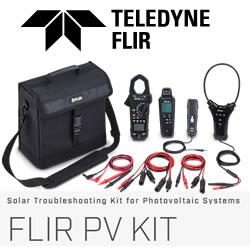NREL Highlights Leading Utility Green Power Programs
The U.S. Department of Energy's (DOE) National Renewable Energy Laboratory (NREL) released its annual ranking of leading utility green power programs.
The U.S. Department of Energy's (DOE) National Renewable Energy Laboratory (NREL) today released its annual ranking of leading utility green power programs. Under these voluntary programs, consumers can choose to help support additional electricity production from renewable resources such as solar and wind. More than 600 utilities across the United States now offer these programs.
Using information provided by utilities, NREL develops "Top 10" rankings of utility programs (http://www.eere.energy.gov/greenpower/resources/tables/topten.shtml) in the following categories: total sales of renewable energy to program participants, total number of customer participants, customer participation rate, and the lowest price premium charged for a green pricing service using new renewable resources.
Ranked by renewable energy sales, the green power program of Austin (Texas) Energy is first in the nation, followed by Portland General Electric, PacifiCorp, Florida Power & Light, and Sacramento (Calif.) Municipal Utility District.
Ranked by customer participation rates, the top utilities are City of Palo Alto (Calif.) Utilities, Lenox (Iowa) Municipal Utilities, Montezuma (Iowa) Municipal Light & Power, Holy Cross Energy (Colo.), and Sacramento Municipal Utility District.
"Utility green power sales continue to show strong growth across the country," said Lori Bird, senior energy analyst at NREL. "These utilities are the national leaders."
Customer choice programs are proving to be a powerful stimulus for growth in renewable energy supply. In 2005, total utility green power sales reached 2.7 billion kilowatt-hours (kWh), a 36% increase over 2004. And an estimated 430,000 customers are participating in utility programs nationwide, up 20% from 2004.
Utility green pricing programs are one segment of a larger green power marketing industry that counts many government agencies, colleges and universities, and Fortune 500 companies among its customers, and helps support more than 2,200 MW of renewable electricity generation capacity.
NREL analysts attribute the success of many programs to persistence in marketing and creative marketing strategies, including in some cases, utility partnerships with independent green power marketers. In addition, the rate premium that customers pay for green power has dropped as fossil fuel prices have increased. "Higher prices for conventional energy sources are focusing greater consumer attention on renewable energy options," said Blair Swezey, NREL principal policy advisor.
NREL's Energy Analysis Office performs analyses of green power market trends and is funded by DOE's Office of Energy Efficiency and Renewable Energy.
NREL is the U.S. Department of Energy's primary national laboratory for renewable energy and energy efficiency research and development. NREL is operated for DOE by Midwest Research Institute and Battelle.
Featured Product

FLIR PV KIT - Solar Troubleshooting Kit for Photovoltaic Systems
FLIR PV kits are designed to assess the performance, safety, and efficiency of residential, commercial, and industrial solar panels and photovoltaic systems. PV kits from FLIR help you diagnose faults and potential failures and ensure optimal energy production, system longevity, and compliance with industry standards. With a PV kit from FLIR, you'll be perfectly equipped for any solar installation or repair.
